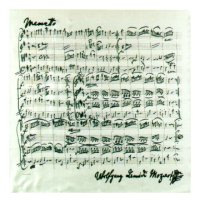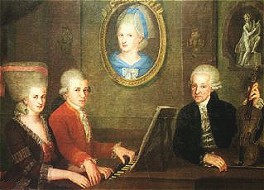In the classical era, the minuet was one of the most popular dance forms: a noble, charming, relatively cheerful dance in triple time. In music, the minuet is typically contrasted with a trio, also in triple time and so named because it was originally scored for a smaller number of instruments, usually winds. The minuet's popularity was reflected in the developing Classical Symphony where minuets and trios are typically the third movement. As the minuet was a courtly dance, and the symphony courtly entertainment, composers sometimes used the minuet to mock the peasantry. For instance, several of Haydn's minuets - written for the Esterhazy court - feature rollicking peasant rhythms. As the classical era aged and the old order succumbed to the new, the minuet began to lose its cache in the symphony. In many of Beethoven's symphonies the minuet is treated in an ironic way or replaced altogether by a scherzo, literally "joke."
The third movement of Mozart's Eine Kleine Nachtmusik (A Little Nightmusic) is a particularly perfectly balanced example of a minuet and trio. Traditionally, the Minuet is followed by the Trio, which is followed by a return to the Minuet: a classic ABA form. On the smaller scale the form is slightly more complex. Each half of the minuet is repeated, followed by a similar procedure in the trio. When the minuet returns the repeats are traditionally omitted.
The balanced phrasing of the classical period are here put into the service of dance. In the minuet each step to the left must be answered by a step to the right, lest all the couples crash into the wall. The inherent balance in classical phrases allows for reciprocal movement on the part of the dancing couples and saves many bruised shoulders.
Mozart's Eine Kleine Nachtmusik was never intended for the musical pantheon that it now appears in. For Mozart, the work was a simple, yet beautiful, serenade that would have been performed while the members of the court were eating dinner. It was entertainment music for the nobles, pure and simple. Scored for the lean ensemble of string quintet (a traditional string quartet of two violins, viola and cello plus a bass) it has become a perfect example of all aspects of the classical style.
|

The Score in Mozart's Hand
|


